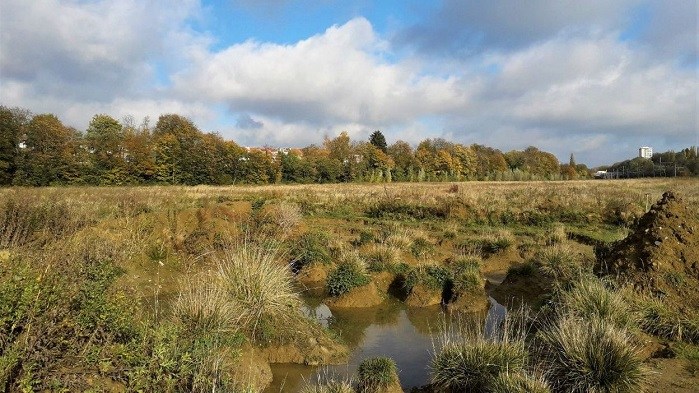Ever since the old Schaerbeek-Josaphat marshalling yard fell out of use in 1994, nature has slowly taken back the site. The result is an unparalleled, urban nature reserve known as “Friche Josaphat”: the most biodiverse place in Belgium.
Because the site is not accessible to the public, insects, birds, and mammals such as foxes, have begun calling this wild cityscape their home. Biologists were astounded to find more than 1200 animal species on the mere 24 hectares of land. One-third of the 360 wild bee species that are found in Belgium and the Netherlands have been spotted at the Friche, many of whom are at serious risk of extinction. Especially in an urban environment, this degree of biodiversity is rare.
But there are dark clouds on the horizon of Brussels’ last patch of wilderness. A decade ago, the Friche, along with about a dozen of other sites, was selected as a potential site for urban development by the Brussels Capital Region. At the time, Brussels' population was expected to continue to expand explosively.
According to the initiators of the petition Sauvons la friche Josaphat (“Save the Friche Josaphat”) that garnered more than 15.000 signatures, developing the Friche is unnecessary due to declining population growth and the site’s biodiverse richness.
“If the Brussels government, which according to its coalition agreement wants to combat climate change and global warming, decides to parcel out one of the last pieces of nature in Brussels, without taking into account its enormous biodiversity, and knowing there is 6,500,000 m² of vacancy in the city, it will lose all credibility,” says Tom Lootens, chair of BRAL, a civic movement for a more sustainable Brussels.
The development plans, that date back to 2014, are currently being adjusted to cater to the demands of its critics. If the city must build at the Friche, conservationist organizations have proposed a “Plan B” where development will be focused on the eastern, former industrial side of the plot, which is less fundamental to its biodiversity.
Meanwhile, the Friche’s spring flowers are catering to its pollinators, while birds of prey soar over the plains in search of a meal. That is, for now.


